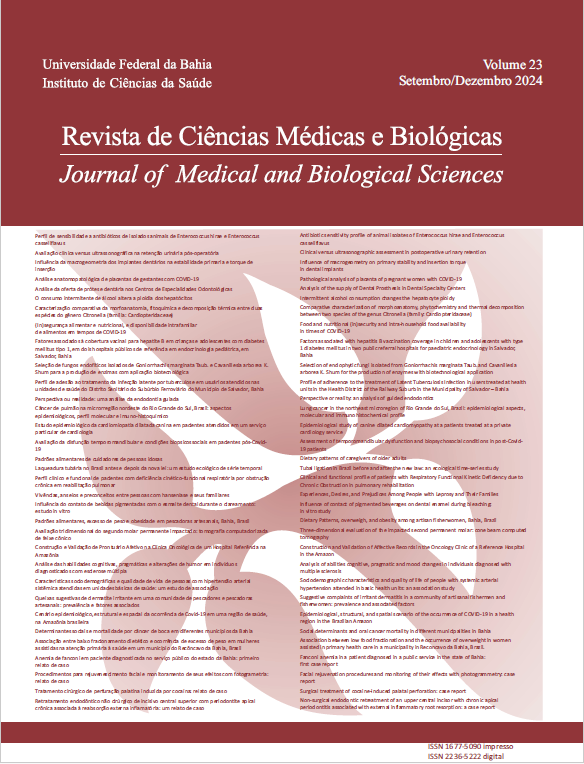Association between low food fractionation and the occurrence of overweight in women assisted in primary health care in a municipality in Reconcavo da Bahia, Brazil.
DOI:
https://doi.org/10.9771/cmbio.v23i3.58836Keywords:
Women’s Health; Weight gain; Dietary habits; Health Unic SystemAbstract
Introduction: Scientific evidence shows that low dietary fractioning increases the risk of developing overweight and other Non-Transmissible Chronic Diseases (NCD). Objective: To investigate the association between low dietary fractionation and the occurrence of overweight in women assisted in Primary Health Care (PHC) in a city of Recôncavo da Bahia. Methodology: Cross-sectional study nested in a quasi-experimental study with 139 women of childbearing age and pregnant women assisted in the Family Health Units of Santo Antônio de Jesus, Bahia, between October 2022 and April 2023. Poisson Regression with robust variance was used to evaluate the association between the exposure variable and the outcome studied. Results: The prevalence of overweight in women who ate up to 3 meals a day was 29% (PR = 1.25; 95%CI = 1.02-1.63). A higher prevalence of overweight was observed in pregnant women with low dietary fractionation (RP=1.25; 95%CI=1.0-1.71), who had had another pregnancy (RP=1.53; 95%CI=1.16-2.54) and who were drinking alcohol (RP=1.09; 95%CI=1.10-1.80). Conclusion: This study identified a high prevalence of overweight in the female group and that low dietary fractioning and other factors such as multiparity, life cycle and alcohol use were associated with the occurrence of this outcome, indicating the need for monitoring the health and nutrition of women in all life cycles.
Downloads
Downloads
Published
Versions
- 2025-06-27 (5)
- 2025-04-07 (4)
- 2025-04-07 (3)
- 2025-02-24 (2)
- 2025-01-09 (1)
How to Cite
Issue
Section
License
Copyright (c) 2024 Journal of Medical and Biological Sciences

This work is licensed under a Creative Commons Attribution 4.0 International License.
The Journal of Medical and Biological Sciences reserves all copyrights of published works, including translations, allowing, however, their subsequent reproduction as transcription, with proper citation of source, through the Creative Commons license. The periodical has free and free access.


